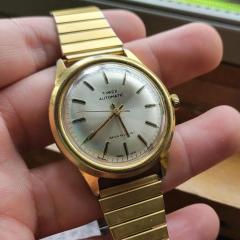-
Recently Browsing
- No registered users viewing this page.
-
Topics
-
Posts
-
[SBGA405] Grand Seiko “Godzilla” Spring DriveI always enjoy coming back at the end of the week to my first Spring Drive watch which is a combined automatic mechanical watch and a high quality quartz — a Spring Drive.Impressive accuracy (10 seconds per month) and wears remarkably comfortable at 44.5 mm in diameter and 95 gm.Love the power reserve indicator, and the colour of the dial amd the watch band.One of my “perfect” watches!!😍
-
By Neverenoughwatches · Posted
Yep, so we got a 10 1/2 ligne movement, thats the starting point now these bad boys books should hopefully get us across the finishing line . Next we need a good clear picture of that rocking bar, the setting lever and the setting lever spring. I've already got an idea what it might be. -
Kalle Slaap said he is visiting London this week in order to see the exhibition. I was keeping an eye open, hoping to meet him.
-











Recommended Posts